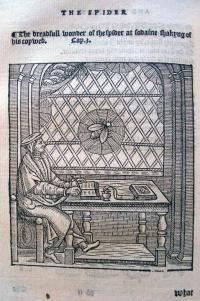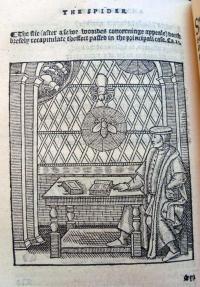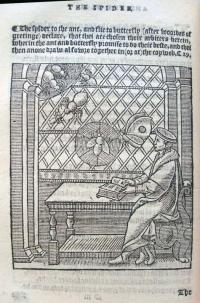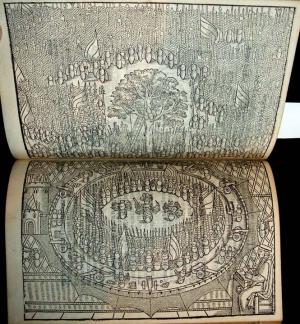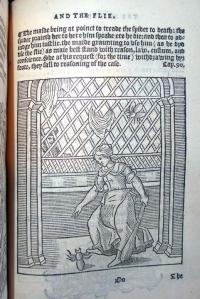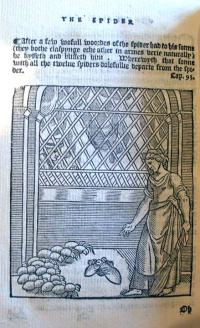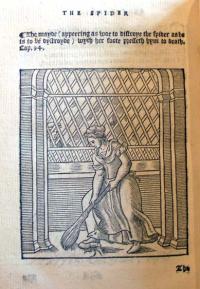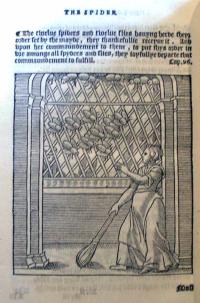With apologies to the curator of rare books, in whose collection this book lives, I must mention John Heywood (1497?-1580?) and his obscure 1556 allegory of the Protestant spider and the Catholic fly. A trained singer and actor, Heywood was also a devoted Catholic who supported the religious beliefs of Queen Mary and dedicated several poems to her. Mary appears in the last portion of The Spider and the Fly, as the housemaid who cleans up the house of England.
Heywood’s illustrated poem has 98 chapters, each introduced by a woodcut. Running 456 pages, the parable has been called “the least-loved long poem of sixteenth-century England.” The fly, named Buz, gets caught in the web at the center of the window. Buz argues with a spider that flies (Catholics) have as much right to be there as the spiders (Protestants). Other insects join the fight: the ants come to support the spiders and the butterflies support the fly. This leads to a battle in which 5,000 flies and 5,000 spiders are killed.
Mary arrives, frees Buz, takes down the web, and crushes the Spider.
John Heywood (1497?-1580?), The Spider and the Flie (London: Tho. Powell, 1556). Robert Taylor Collection (RHT) 16th-49
For more information, read Judith Rice Henderson, “John Heywood’s ‘The Spider and the Flie’: Educating Queen and Country” Studies in Philology, 96, no. 3 (summer 1999): 241-274.
